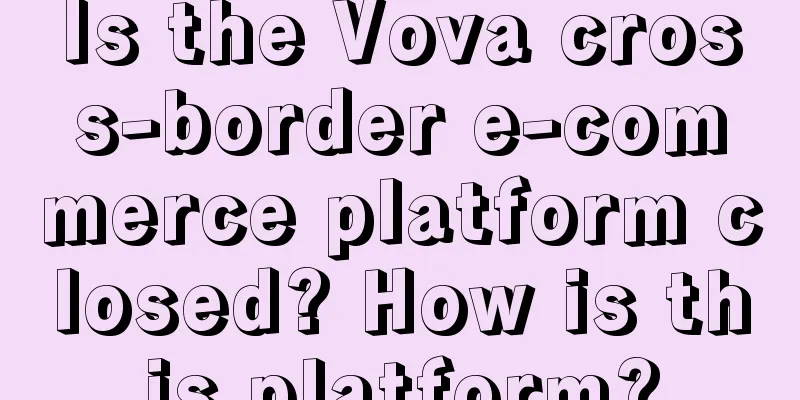It took us two months to crack the business data that WeChat didn't want to reveal

Are you willing to give up WeChat for an iPhone? Because of the issue of app payment commissions, rumors of "choose one of the two" between Apple and WeChat have once again become a hot topic, attracting hundreds of millions of people to watch. Recently, more than 100,000 people participated in a poll on Weibo: 84% of them said that if they had to choose between an Apple phone and WeChat, they would choose WeChat. As the most popular social application in China, WeChat’s position is hard to shake. A recent academic study showed that 42.2% of respondents spent an average of 2.5 hours or more on WeChat every day, with a usage stickiness far exceeding that of other social media. But today, the form of social media has changed, consumer habits have changed, and even the way brands do marketing has changed. Why is the "Chinese-style social networking" on WeChat still so popular? In fact, as early as 2019, at the WeChat Open Class, Zhang Xiaolong, the "Father of WeChat", said this: " Many people say they want to escape from WeChat Moments, or say they don't use WeChat Moments much. But in fact, this is an illusion seen by everyone in the Internet circle. " The need for social interaction has not changed, and people cannot really leave social interaction. In his opinion, "friend circle may be the most efficient social tool in China." So, is it possible for a product manager with a deep insight into human nature to make mistakes? What is the real situation today? From the perspective of brand marketing, what overlooked commercial value is there? Unfortunately, WeChat has stopped publishing its annual WeChat Data Report since 2020. If we talk about the behavior and attitude of WeChat Moments users towards commercial advertisements, the last official disclosure was a full 10 years ago. So we decided to start mining data from WeChat Moments and replicate an “unofficial version” to decipher the business code in WeChat:
We specially selected 2,000 WeChat Moments users and conducted research on five industries where Moments marketing is popular, including beauty and personal care, luxury goods, automobiles, sportswear, and commercial services. We obtained five counter-intuitive conclusions - we also hope to take this opportunity to give some inspiration and reference to companies investing in social media marketing. (Note: For details of the sample, please see the appendix. In the following text, “the WeChat Moments users interviewed in this interview” are collectively referred to as “consumers” or “users”. 01 New discovery 1: The average daily penetration rate is close to 75%, and we still cannot do without WeChat MomentsFive years have passed since that open class, and the discussion on "Friends Circle is getting quieter" has repeatedly become a hot topic. People feel that during the once lively festivals such as Chinese Valentine's Day and May Day, it seems that few people are active in WeChat Moments. According to a survey by China Youth Daily, 63.9% of the respondents set their WeChat Moments to be visible for three days - there are probably no friends in the WeChat Moments, just like there is no wife in the wife cake. But the final data results show: we cannot escape from our circle of friends, just as we cannot escape from social interaction. This unique form has not only penetrated into consumers' living habits, but has also become one of China's most scarce marketing resources. From the overall usage habits:
Why do we feel that our circle of friends is not as lively as before? It’s not that people don’t like to use Moments anymore. It’s because there are more “indifferent people” in Moments. People prefer to browse instead of posting:
So, how will the commercial value of the circle of friends change? Let’s first think about a logic: the time spent on browsing has increased (content demand), but the frequency of posting has not increased accordingly (content supply), which means there is a gap between the supply and demand of content. If brands can put high-quality advertising content in WeChat Moments, they will definitely be able to fill the gap and attract consumers’ attention – this is where the future business opportunities of WeChat Moments lie.
We believe that simply labeling the Moments as “acquaintance social networking” is one-sided. The uniqueness of the Moments is that it is a “public space” constructed by screening the relationships among acquaintances. It has both a certain degree of privacy and openness, making the flow of information in it more natural – other channels may not be able to replace this particularity. Zhang Xiaolong compared it to a square: "You spend half an hour walking through the square every day, and you'll see a bunch of people discussing different things in the square, chatting about different things, with their own topics, and every group of people you pass by is filled with people you know, and you can stop and join them in any small circle discussion, and you'll find that every small circle is filled with people you know." Our data also confirms this: 70% of WeChat users have more than 200 friends, which is actually higher than the “Dunbar number” of 150 people – the value of the “social square” is even more obvious. 02 New discovery 2: More than half of users want to interact, and Moments ads are more friendly and credibleIt is precisely because the circle of friends plays the role of a "square" that a balance is found between brand marketing and consumer experience:
It is not difficult to understand that, from the perspective of users’ subjective feelings, the trust and intimacy of this “square” is significantly higher than that of conventional social media channels. The difference in value is not that obvious, because there is no public domain recommendation algorithm mechanism in Moments, and people cannot experience the sense of accomplishment of their own Moments getting 100,000+ hits. This makes consumers very receptive to WeChat Moments ads, and consumers will transfer their trust in the entire “square” to commercial ads:
If we further split the users into different industries, the characteristics are also quite obvious:
03 New Discovery 3: More than 70% of users’ interests are stimulated by interactions with friends, and Moments ads can leave a deeper impressionZhang Xiaolong has always insisted on giving priority to user experience and has been cautious and restrained in product development. This positive impression is widely circulated among WeChat users. But when the topic returns to business, can WeChat Moments really create unique value for both brands and consumers? Although consumers generally believe that the marketing form of Moments is a good experience and trustworthy, in their minds, is the status of Moments equal to that of other media forms? In order to verify whether Moments is really popular, we designed a scenario hypothesis to observe consumers' attitudes. First, we found the most boring time of the day for most people, which is also the time when their attention is not spent: when they are in a closed environment such as an elevator or subway, and there are no urgent things to deal with. Psychological research shows that when people are bored, they tend to obtain and pay attention to fresher and more interesting information as stimulation. So in this extreme scenario, what is the first thing that comes to people’s mind when it comes to information acquisition channels? You'd think people would look at the advertising screens in the scene at this point - this form of advertising is designed to cater to people's attention spans. However, survey data shows that the appeal of Moments may exceed that of elevator ads. In this scenario, only 49% of consumers will watch ads in the space, while nearly 70% will choose to browse Moments, which is even higher than other alternative activities such as browsing other social media, playing games, and listening to music. This shows to a certain extent that the Moments has fully cultivated user habits and has a unique position in the minds of users, thus generating high commercial value. In this case, information that appears in Moments (including the advertisements themselves) not only has a higher probability of being exposed, but may also leave a deeper impression on people. The following research also confirmed this:
So the question is: Why do consumers think that the ads in WeChat Moments are different? What elements deepen their impression? This still comes back to the logic of social interaction. We found that WeChat Moments users generally have a characteristic, which is that they are more easily influenced by the actions, attitudes, and opinions of people around them, and they rely more on friends and acquaintances when making consumption decisions. In this case, let us think of a unique feature of Moments ads: the ability to intuitively display friends’ interactive information, such as likes and comments. The conclusion is very obvious: Moments ads are equivalent to having friends and acquaintances endorse the ads, directly hitting the points that users care about most, leaving users with a deeper impression of Moments ads. Survey data shows that 73% of users believe that interaction with friends will increase their interest in ads . When users see comments or likes from friends in their Moments, it can significantly increase their willingness to click on ads and like comments, and take corresponding actions. In addition, the popular "interest-based groups" have also become the most important endorsement source for WeChat Moments ads. We found that consumers are most likely to become interested in ads after seeing acquaintances with common interests interacting with them. In other words, WeChat Moments ads may be able to better penetrate various interest groups and achieve brand cross-circle communication. Of course, we have another speculation about the uniqueness of Moments: Moments can be used as a "sleeping tool" and a "weekend companion." Before going to bed and on weekends, consumers are usually in a more relaxed state, with a whole period of time to browse information and less environmental interference. For example, when you are working in your daily life, you are likely to multitask, but before going to bed, you tend to focus on one action, and your attention is relatively concentrated at this time, so the information you see is relatively easy to "enter your mind." 04 New discovery 4: Nearly half of high-income people love to browse, and Moments is very suitable for marketing high-order productsSince the social element is the most impressive part of Moments ads for consumers, what is it that essentially makes consumers willing to let others see their likes and comments? We found that this is actually a behavior that demonstrates one's social identity and shows one's taste. Compared with the common KOL promotion and product recommendation, the product promotion advertisements commonly seen in the circle of friends give consumers a more "high-end feeling" . To put it bluntly, letting others see that you are the target of high-end products is itself a manifestation of seeking social recognition, which will be further amplified in the environment of friends and acquaintances. This leads to the next conclusion: high-income people seem to be more interested in hanging out in the square, and high-end products are more likely to attract people's interest in the square. This means that deep users in the circle of friends are all "high-quality people" in the eyes of brands. We found that:
In terms of ad browsing depth, luxury industry users have the lowest rate of swiping away/closing ads and have a relatively deep understanding of brands and spokespersons. The automotive industry has the highest rate of completing and repeatedly watching ads. What’s more interesting is that when we go back to the previous closed scenario simulation, people with higher incomes tend to “want it all”, which increases the frequency of watching elevator ads and using Moments. This may mean that Moments has begun to reach the high-end population covered by traditional offline ads. 05 New Discovery 5: More than 80% of users take action after watching ads, and ads in Moments have a strong ability to attract usersFrom the perspective of brand marketing, the "high-end feeling" of the circle of friends is a notable feature, and it also gathers a large number of high-quality people, but will it bring about the problem of too high a threshold? First of all, is the circle of friends only suitable for ultra-high-end products and top brands, and not friendly to mid- and low-end brands? We found that because social networking has the attributes of circles, everyone sees this "square" differently. Even two people with completely different portraits can find fun in it. Therefore, Moments advertising is compatible with both upper and lower brands:
Secondly, can the circle of friends only bring brand exposure in a single channel and specific scenario, and cannot have an impact on the entire marketing chain? We found that after watching Moments ads, consumers not only take corresponding actions within WeChat Moments, but also "spill over" and interact with brands across the board:
Out of curiosity, we also studied what consumers who saw WeChat Moments ads would do at each subsequent step. This leads to a magical discovery: even if consumers do not click on the WeChat Moments ads, they will be attracted! Some people did not click on the ads at all, but just saw the cover, but then went to look up relevant information in the first step. This phenomenon is very significant, accounting for 30-50% of the total query behavior in various industries. What’s even more interesting is that some of these consumers who “blindly recommend products” will return to the WeChat mini program after searching for information, complete membership registration, and even make purchases. The typical paths of consumers in different industries are as follows: 06 We also found more incremental space: digging into the crowd, expanding the track, and optimizing creativityThrough the discussion above, I believe everyone has a new understanding of the commercial value of WeChat Moments. So, if brands want to use the social resources of WeChat Moments and develop more incremental sales, where can they start? We also have some findings that can guide actual marketing activities: Population growth: There are still many new populations to be explored In the past three months, 21% of WeChat Moments users have never seen Moments ads. Among those who have seen WeChat Moments ads, only 40-50% have seen ads on Xiaohongshu, Douyin, Weibo, and Kuaishou. This shows that there is a certain difference between Moments users and people on other social media platforms. The audience of Moments ads still has a lot of room for brand exposure and conversion penetration. 68% of users have never purchased or used the advertised brands, and 40% of users are still in areas where brands are not fully exposed. Commercial services and beauty and personal care still have a lot of room for brand exposure and penetration. Track increment: Blue ocean opportunities exist in vertical segments Take commercial services as an example: users’ conversion behaviors such as leaving information and attending WeChat Moments ads are significantly higher than those on other platforms. Creative increase: Optimizing content creativity can improve advertising effectiveness Users are interested in new products breaking through the circle of friends, and the appropriate push matching mechanism is also an important factor affecting clicks on ads. The primary reason why users do not click on ads is that the ad content lacks appeal. 07 ConclusionIn 2024, social media reached a new milestone: the number of active users worldwide exceeded 5 billion for the first time, and more than 60% of humanity has gained connections through online social networking. In 2023, 8.4 new users around the world started using social media every second. However, behind the continued growth in penetration rate, marketing practitioners around the world are facing a common challenge – social media marketing is falling from the "golden age" to the "iron age". The latest data shows that the user time spent on social media around the world (including China) has actually begun to decline, and the proportion of users' daily use of social media as a percentage of their total online time has barely increased. Judging from the data node in 2023, 36 out of 48 countries have seen a decline in the length of time spent on social media by users, including various regions in Asia Pacific, South America, the Middle East, and Southeast Asia. China is of course no exception - this even set the largest measurable decline record in the past 12 years. A recent study of the Chinese Internet market pointed out that the penetration rate of the five major new media platforms, Douyin, Kuaishou, Weibo, Xiaohongshu, and Bilibili, has dropped compared with the previous year. The proportion of these platforms in the total online time of users has also entered a period of slowdown from rapid growth. The problem does not lie with social media platforms themselves, but with consumers. In the fast-food era, where the average person uses 28.5 apps and attention spans rarely exceed 3 seconds, the word "loyalty" does not exist in consumers' vocabulary. On the other hand, social media fatigue (SMF), a well-defined psychological symptom, is affecting more and more people to "escape from social media" - scrolling through their phones may not bring pleasure, but stress and anxiety. However, the share of brand marketing budgets spent on social media has not decreased. Research shows that the market share of social media advertising, including short videos, has increased from 22.5% in 2019 to 35.9% in 2023. As the era of marketing budget tightening approaches in 2024, 68% of advertisers are still prepared to increase advertising in social media scenarios - among high-budget advertisers, this proportion has increased to 73%. Even if brands tighten their belts, they will spend every last penny on social media. The result of this contrast is that more money and greater competition can only win consumers' more limited time and attention, the efficiency of social media marketing has become lower, and it has become more difficult to build brand awareness. In this environment, the WeChat ecosystem represented by Moments actually provides brands with a "safe haven" to cope with the recession cycle. Although it cannot bring exponential growth immediately, it can last for a long time in the minds of users and reduce the risk of marketing budgets. In the next few years, WeChat will continue to be a solid position for brand social media marketing. In the coming period, we will also conduct in-depth research on WeChat influencer marketing and Tencent advertising industry lines, and analyze more marketing value and business opportunities in the Tencent ecosystem. Stay tuned! appendix: |
>>: Why are Internet giants and new consumer brands collectively "seizing" Hong Kong?
Recommend
Is it good to open a store on a cross-border e-commerce platform? What are the advantages?
Many businesses have set their sights on foreign c...
Double the price of old FREITAG on Xianyu, is it a waste of money or is it really worth it?
High quality, good-looking design and very interes...
How can I contact sellers on Amazon International Station? How can I contact overseas customer service?
When we shop on domestic e-commerce platforms, if ...
A complete guide to marketing on Xiaohongshu, from platform features to marketing techniques!
There are many clickbait-style articles on the mar...
I promote innovation in traditional enterprises. Professional ability and understanding of interest relationships are required, but subversion is not required.
This article is very close to the actual situation...
ChatGPT continues to be popular, where should AI marketing go?
The AI era has quietly arrived, and the term &qu...
Will ChatGPT and Sora disrupt the marketing industry?
With the emergence and iteration of artificial int...
What is Shopee Live? What is it used for?
Nowadays, whether it is the media or e-commerce, e...
Still asking if there is a business analysis template? Do these steps first
Many companies' business analysis reports ofte...
Does TradeKey require a business license? What platform is it?
Tradekey is now a relatively well-developed cross-...
Which cross-border e-commerce platform is the best and most reliable? How can a novice do cross-border e-commerce?
Faced with so many platform options, sellers often...
What are adult products on Amazon? What are the situations where they are labeled as adult products?
When opening a store on Amazon, people usually cho...
Are self-built websites and independent websites the same? Detailed answer
When a business builds an independent website, the...
Jiugongge live broadcast makes people rich: "Big Brother" spends tens of millions on rewards, and the anchor earns 200,000 yuan a month
Jiugongge Live has recently launched a low thresho...
The "beer + diapers" scam of the century
This article starts with the fake news "beer ...









